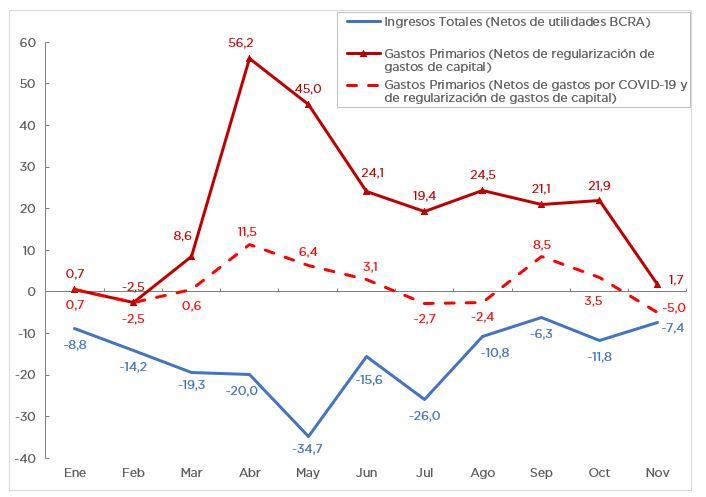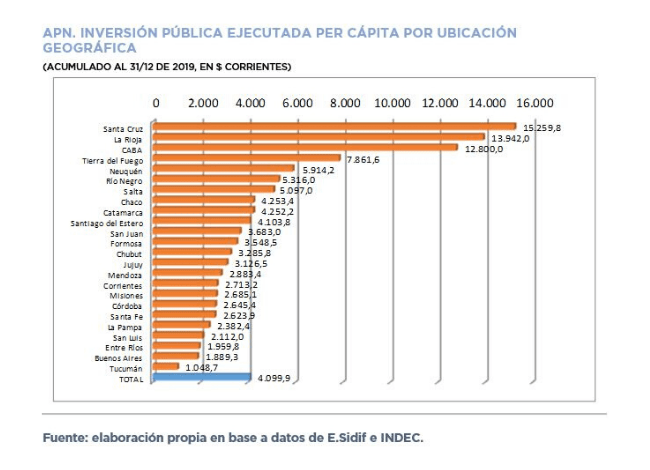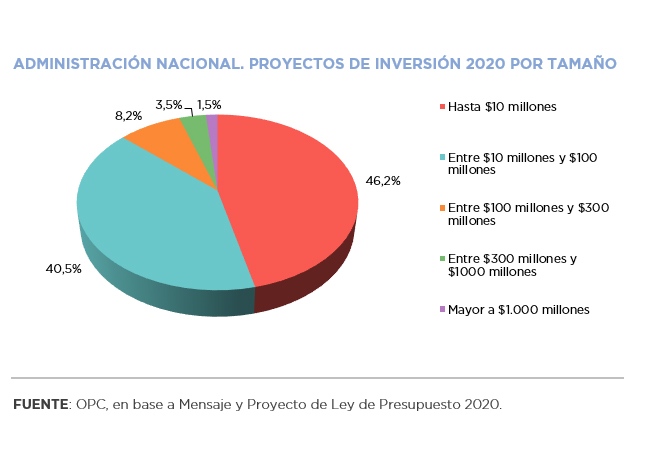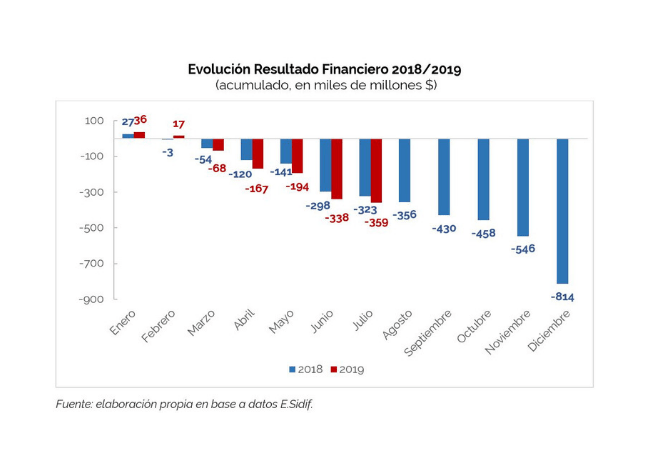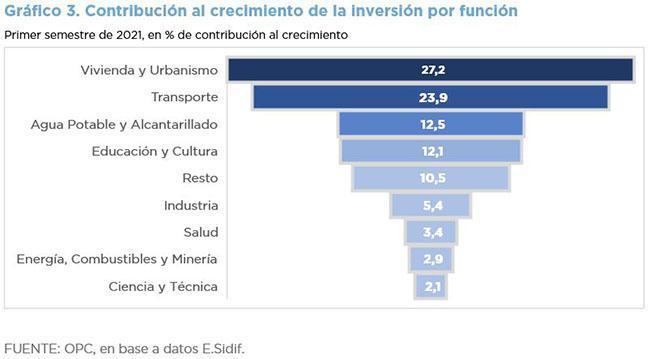
ANALYSIS OF PUBLIC INVESTMENT BUDGET EXECUTION – FIRST QUARTER 2021
With a significant rebound in expenditure on housing and urban planning, public investment (PI) executed during the first half of 2021 amounted to ARS296.98 billion, which jumped 107.2% in real terms compared to the execution of the same period in 2020.
This improvement is explained both by the increase in capital transfers, which rose 132% year-on-year, and by the higher direct real investment, which jumped 63%.
Thus, the highest proportion of the last four years with respect to primary expenditure was reached: investment represented 7.7%.
- It accrued 38% of current appropriations, a percentage that climbed to 47.2% in housing and urban planning, one of the most outstanding items, which showed a year-on-year increase of 560.2%.
- The execution of investment projects involved 452 works for a total of ARS64.62 billion. Of the main 20 -which account for more than half of the funds-, 14 were for the construction of highways and freeways.
- Buenos Aires and Córdoba were the main recipients of the transfers to provinces and municipalities, which increased by 312.4%.
- Fifty-four percent of disbursements were concentrated in the Pampas Region, where investment grew by 145.4% YoY.
- Domestic sources accrued 46.3% of funds and showed an increase of 148.6% YoY compared to the same period a year earlier.

